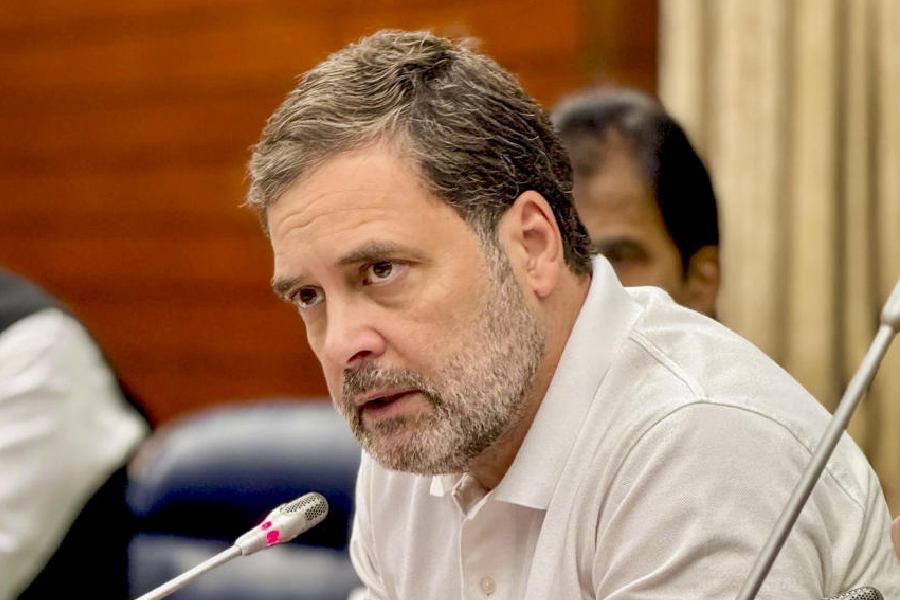When Russia invaded Ukraine in 2022, the whole world was besotted with the incredible enthusiasm and the fighting spirit displayed by Ukraine. Western media reports claimed that Russia was certainly going to be defeated soon but the narrative has shifted in 2023. Ukraine’s commander-in-chief, Valerii Zaluzhny, has admitted that the war is at a stalemate, and Ukraine is struggling to make a breakthrough against Russian defences. Despite massive Western military and financial support, the possibilities of Ukraine reversing Russian aggression are getting dimmer by the day.
Although it is out of the global spotlight, the situation is similar at the Sino-India border in Ladakh. After 48 months, India finds itself unable to reverse the Chinese ingress into border areas that were patrolled by Indian soldiers till 2020. If Narendra Modi’s claim that no Chinese soldier has intruded into Indian territory is true, then Xi Jinping’s soldiers achieved the marvel of denying Indian military patrols access to 26 out of the 65 patrolling points on the Ladakh border purely by black magic. Many of these patrolling points are on the Indian side, well short of the line of actual control. In 20 rounds of talks between corps commanders, the Chinese side has not considered any proposal to have the two sides undertake disengagement in Depsang and Demchok. In the other areas where disengagement took place till last year, the Chinese have refused to start de-escalation that would remove their soldiers from the operational area.
Unlike Ukraine, which wants its territory back, India is not talking about restoring the status quo in Ladakh as it existed in 2020. The Modi government shuns and bars all conversation about territorial control that has been lost to China in the border areas. Leave alone a frank discussion, even questions on the subject have not been allowed in Parliament; the media have not been formally briefed and visits of journalists, even government-friendly ones, to the contested areas have not been organised by the Centre. By ignoring that a humiliating situation exists on the China border despite 19 bilateral meetings between Narendra Modi and Xi Jinping between 2014 and 2019 and two meetings at Bali and Johannesburg during the crisis, the government wants to keep the embarrassment out of sight.
Out of sight is out of mind. The people forget. The news cycle hypes the next manufactured controversy. This is a tactic that has been successfully employed during the massive suffering caused by demonetisation and the second wave of the Covid-19 pandemic with the cooperation, collaboration and co-option of the mainstream Indian media. Ethnic cleansing in Manipur is being dealt with by the same playbook as is the fate of eight retired Indian navy officers in Qatar.
In the catalogue of crises, the Ladakh border stand-off is the most ominous. A report by the International Crisis Group warns that “without improvements in the tone and substance of the bilateral relationship, the threat of fresh outbreaks of fighting persists.” The perceived stability at the border should not lull us into believing that the worst is past us. If, as the ICG report cautions, “the 2020s will present sterner tests than the last few decades did” on the Sino-India border, there is a need to be prepared for all eventualities. That can only start with an honest appraisal of all that went wrong in the political, diplomatic, military and intelligence domains resulting in the shock at Ladakh. Unless we fix responsibility and demand accountability from those at the top, we run the risk of sleepwalking into a bigger disaster.
Stability on the disputed Sino-India border since the 1990s was not achieved by the largesse of the Communist Party of China; it was the outcome of well-planned Indian deterrence at the border. That deterrence has broken down since 2020. Deterrence works on the attacker’s calculation of the costs, benefits, and risks of an action. Xi was convinced that the People’s Liberation Army would achieve its aim on the border without any adverse costs being imposed by the Modi government. At a mountainous border which was poorly monitored and infrequently patrolled due to the vagaries of terrain and climate, it was not possible to deter Chinese soldiers by denying them an initial success once they had surprised India. The only other alternative then to deter China was by limited punishment, which is popularly called the strategy of quid pro quo in Indian military parlance. It calls for the Indian military to take a limited operation, well under the threshold of escalating into a full-blown conflict, to capture some territory on the Chinese side. This forces Beijing to negotiate promptly and restore the situation, as was successfully done by India in 2013.
The Modi government undertook a half-hearted quid pro quo operation in the Kailash range in August 2020. The military gains were lost on the negotiating table for political aims and, since then, the government has been timid in undertaking a serious move to force the Chinese hand. Last month, the former national security adviser, Shivshankar Menon, exasperatedly said that we are not “making progress towards either stabilising the border with China, or preventing China from using the threat of action on the border.” The only way for India to stall the threat of action is by recreating deterrence, which is as much a function of military capability as it is of political will. The Modi government claims that the military is fully prepared under its watch; this means that what is lacking is the political will.
China is extremely comfortable with the degree of control it has of the border. It is more content than India with the contours of its bilateral relationship with New Delhi. Xi did not come to India to attend the G20 summit and Beijing has been issuing stapled visas to Indian athletes from Arunachal Pradesh to travel to China. In August, it issued a new map that shows Arunachal Pradesh and the Aksai Chin plateau to be Chinese territory. Beijing had renamed 11 places in Arunachal Pradesh in April in an official document to assert its claim without any concern for Indian sensitivities.
Even within India’s neighbourhood, China has held structured talks with Bhutan to resolve their border dispute; a solution there would directly impinge on India’s national security considerations. The two countries are also hoping to establish diplomatic ties, further consolidating China’s influence in the region. Maldives has a new China-friendly president who has vowed to remove the 75 Indian military personnel present on the archipelago. Sri Lanka refused to address Indian concerns when it allowed the Chinese research ship, Shi Yan 6, to dock at Colombo port last month. Meanwhile, Xi was in the United States of America, engaging with the US president, Joe Biden, in a direct conversation. This sudden rapport with the US can add to New Delhi’s apprehensions.
If the situation in the military and diplomatic spheres is dispiriting, India’s bilateral trade ties with China are even more troubling. As per the latest data, between April to October 2023, India imported goods worth $60.02 billion from China and exported only $8.92 billion of merchandise to its northern neighbour. In fact, India imports as much from China as it does from its two next biggest importers, Russia and the US. Notwithstanding the slogans of atmanirbharta and Make in India, the quantum of trade and its balance in China’s favour have only increased during the Ladakh border crisis. India has been actively seeking and receiving major loans from the Asian Infrastructure Investment Bank and the New Development Bank, the two multilateral banks based in China.
India is faced with a challenge from China. It is present on the border, in the South Asian neighbourhood, and in economic ties. India’s response has been inadequate and characterised by political timidity. A tactic of keeping the Indian citizenry either distracted or in the dark is easy with the help of compromised institutions and a co-opted media but it is not going to help deal with a powerful adversary. The journey to fix this must begin with honesty. Unless democratically- elected leaders are held accountable by a citizenry that is kept fully informed, we should be ready to be shocked, but not surprised, by China, once again.
Sushant Singh is lecturer at Yale University and Senior Fellow at Centre for Policy Research in New Delhi











